Plot Story Of An Hour
Imagine a globe where women are fighting for unprecedented rights, the economic climate is unpredictable, and new developments in technology are made every year. While this earth might sound like the nowadays day, it too describes America in the 1890s . It was in this world that author Kate Chopin wrote and lived, and many of the problems of the period are reflected in her brusk story, "The Story of an Hour." Now, over a century after, the story remains one of Kate Chopin'due south most well-known works and continues to shed light on the internal struggle of women who have been denied autonomy. In this guide to Kate Chopin'southward "The Story of an 60 minutes," nosotros'll discuss: By the end of this article, y'all'll take an adept grasp on Kate Chopin's "The Story of an Hr." So let's go started! If it'southward been a little while since yous've read Kate Chopin'due south "The Story of an Hour," information technology can exist difficult to think the of import details. This department includes a quick recap, but you lot can find "The Story of an Hour" PDF and full version here . We recommend you read information technology once more before diving into our analyses in the next department! For those who just need a refresher, here's "The Story of an Hour" summary: Mrs. Louise Mallard is at dwelling house when her sister, Josephine, and her married man'due south friend, Richards, come up to tell her that her husband, Brently Mallard, has been killed in a railroad accident . Richards had been at the newspaper role when the news bankrupt, and he takes Josephine with him to break the news to Louise since they're afraid of aggravating her heart status. Upon hearing the news of her husband's decease, Louise is grief-stricken, locks herself in her room, and weeps. From here, the story shifts in tone. Every bit Louise processes the news of her husband's expiry, she realizes something wonderful and terrible at the aforementioned fourth dimension: she is free . At commencement she'southward scared to admit information technology, simply Louise quickly finds peace and joy in her access. She realizes that, although she will exist sad about her husband ("she had loved him—sometimes," Chopin writes), Louise is excited for the opportunity to alive for herself. She keeps repeating the word "costless" as she comes to terms with what her husband's death ways for her life. In the meantime, Josephine sits at Louise's door, coaxing her to come out because she is worried about Louise's heart condition. Afterwards praying that her life is long-lived, Louise agrees to come out. However, equally she comes downstairs, the front door opens to reveal her husband, who had not been killed by the accident at all. Although Richards tries to keep Louise's heart from shock by shielding her hubby from view, Louise dies suddenly, which the doctors later attribute to "centre disease—of the joy that kills ." Kate Chopin, the author of "The Story of an 60 minutes," has become ane of the most important American writers of the 19th century. Earlier we move into "The Story of an 60 minutes" assay section, it'southward helpful to know a little scrap about Kate Chopin and the world she lived in. Born in 1850 to wealthy Catholic parents in St. Louis, Missouri, Kate Chopin (originally Kate O'Flaherty) knew hardship from an early on historic period. In 1855, Chopin lost her father, Thomas, when he passed away in a tragic and unexpected railroad accident. The events of this loss would stay with Kate for the rest of her life, somewhen condign the basis for "The Story of an Hour" about xl years later. Chopin was well-educated throughout her babyhood , reading voraciously and becoming fluent in French. Chopin was besides very aware of the divide between the powerful and the oppressed in order at the time . She grew up during the U.S. Ceremonious State of war, and so she had commencement-manus cognition of violence and slavery in the United States. Chopin was also exposed to non-traditional roles for women through her familial situation. Her mother, grandmother, and peachy-grandmother chose to remain widows (rather than remarry) after their husbands died. Consequently, Chopin learned how important women's independence could exist, and that idea would permeate much of her writing afterwards. As Chopin grew older, she became known for her dazzler and congeniality by society in St. Louis. She was married at the age of nineteen to Oscar Chopin, who came from a wealthy cotton fiber-growing family. The couple moved to New Orleans, where they would kickoff both a full general store and a large family. (Chopin would give birth to seven children over the next 9 years!) While Oscar adored his married woman, he was less capable of running a business. Financial trouble forced the family to move around rural Louisiana. Unfortunately, Oscar would die of swamp fever in 1882 , leaving Chopin in heavy debt and with the responsibleness of managing the family'due south struggling businesses. Subsequently trying her hand at managing the holding for a year, Chopin conceded to her mother's requests to return with her children to St. Louis. Chopin's mother died the year after. In order to support herself and her children, Kate began to write to support her family unit. Luckily, Chopin found firsthand success as a writer. Many of her short stories and novels—including her most famous novel, The Awakening— dealt with life in Louisiana . She was also known as a fast and prolific writer, and by the end of the 1900s she had written over 100 stories, articles, and essays. Unfortunately, Chopin would pass away from a suspected cognitive hemorrhage in 1904, at the historic period of 54 . Simply Kate Chopin'southward "The Story of an Hr" and other writings have withstood the test of time. Her work has lived on, and she's now recognized as one of the most important American writers of the 19th century. American life was undergoing pregnant change in the 19th century. Technology, culture, and even leisure activities were changing. "The Story of an Hour" was written and published in 1894, correct equally the 1800s were coming to a close. As the world moved into the new century, American life was besides changing rapidly. For instance, t he workplace was changing drastically in the 1890s . Gone were the days where most people were expected to work at a trade or on a farm. Factory jobs brought on past industrialization made work more efficient, and many of these manufacturing plant owners gradually implemented more than humane treatment of their workers, giving them more leisure fourth dimension than ever. Though the country was in an economic recession at this time, technological changes like electric lighting and the popularization of radios bettered the daily lives of many people and allowed for the creation of new jobs. Notably, however, piece of work was unlike for women . Working women as a whole were looked downward upon by order, no affair why they found themselves in need of a job. Women who worked while they were married or significant were judged even more harshly. Women of Kate Chopin'due south social rank were expected to non work at all , sometimes even delegating the responsibility of managing the house or kid-rearing to maids or nannies. In the 1890s, working was only for lower course women who could not afford a life of leisure . In reaction to this, the National American Woman Suffrage Association was created in 1890, which fought for women'south social and political rights. While Kate Chopin was not a formal fellow member of the suffragette movements, she did believe that women should take greater freedoms as individuals and often talked about these ideas in her works, including in "The Story of an Hr." Kate Chopin's "The Story of an Hour" a short exploration of union and repression in America. Now that you have some of import background data, it's time to start analyzing "The Story of an 60 minutes." This short story is filled with opposing forces . The themes, characters, and fifty-fifty symbols in the story are often equal, but opposite, of one some other. Within "The Story of an Hour," analysis of all of these elements reveals a deeper meaning. A theme is a bulletin explored in a piece of literature. Most stories have multiple themes, which is certainly the instance in "The Story of an Hour." Fifty-fifty though Chopin's story is brusk, it discusses the thematic ideas of liberty, repression, and marriage. Go along reading for a discussion of the importance of each theme! The most prevalent theme in Chopin'southward story is the battle betwixt freedom and "repression." But put , repression happens when a person'due south thoughts, feelings, or desires are being subdued. Repression tin can happen internally and externally. For example, if a person goes through a traumatic accident, they may (consciously or subconsciously) choose to repress the retentivity of the accident itself. Likewise, if a person has wants or needs that society finds unacceptable, society can work to repress that individual. Women in the 19th century were often victims of repression. They were supposed to exist demure, gentle, and passive—which often went against women's personal desires. Given this, it becomes apparent that Louise Mallard is the victim of social repression. Until the moment of her husband's supposed expiry, Louise does not feel free . In their union, Louise is repressed. Readers see this in the fact that Brently is moving around in the outside world, while Louise is confined to her domicile. Brently uses railroad transportation on his ain, walks into his firm of his own accord, and has individual possessions in the form of his briefcase and umbrella. Brently is even free from the knowledge of the train wreck upon his return home. Louise, on the other hand, is stuck at home by virtue of her position as a adult female and her heart condition. Here, Chopin draws a stiff contrast between what it ways to be free for men and women. While freedom is just part of what it ways to exist a man in America, freedom for women looks markedly different. Louise's life is shaped by what guild believes a woman should be and how a wife should behave. Once Louise's husband "dies," even so, she sees a way where she can starting time claiming some of the more than "masculine" freedoms for herself. Chopin shows how deeply important freedom is to the life of a woman when, in the end, it's not the shock of her married man's render of her husband that kills Louise, just rather the thought of losing her freedom again. Marriage as a "The Story of an Hour" theme is more than just an idyllic life spent with a pregnant other. The Mallard's union shows a reality of 1890s life that was familiar to many people. Marriage was a ways of social control —that is to say, marriage helped keep women in check and secure men's social and political power. While husbands were commonly gratuitous to wander the globe on their own, agree jobs, and make of import family unit decisions, wives (at least those of the upper grade) were expected to stay at home and be domestic. Marriage in Louise Mallard'southward case has very lilliputian honey. She sees her marriage as a life-long bond in which she feels trapped, which readers meet when she confesses that she loved her husband merely "sometimes." More than to the indicate, she describes her marriage as a "powerful will bending hers in that blind persistence with which men and women believe they have a right to impose a individual volition upon a swain-creature." In other words, Louise Mallard feels injustice in the expectation that her life is dictated by the will of her married man. Like the story, the marriages Kate witnessed oft ended in an early or unexpected decease. The women of her family unit, including Kate herself, all survived their husbands and didn't remarry. While history tells us that Kate Chopin was happy in her spousal relationship, she was enlightened that many women weren't. Past showing a wedlock that had been built on control and lodge's expectations, Chopin's "The Story of an Hr" highlights the need for a world that respected women equally valuable partners in marriage besides as capable individuals. While this painting by Johann Georg Meyer wasn't specifically of Louise Mallard, "Young Woman Looking Through a Window" is a depiction of what Louise might take looked like as she realized her liberty. The best stories take developed characters, which is the instance in "The Story of an Hour," too. 5 characters make up the bandage of "The Story of an Hour": By exploring the details of each character, we tin can better empathize their motivations, societal part, and purpose to the story. From the opening sentence lonely, we learn a lot about Louise Mallard. Chopin writes, "Knowing that Mrs. Mallard was afflicted with a heart trouble, great care was taken to break to her as gently every bit possible the news of her husband's death." From that statement lonely, we know that she is married, has a eye condition, and is probable to react strongly to bad news . We also know that the person who is sharing the bad news views Louise every bit fragile and sensitive. Throughout the next few paragraphs, we as well larn that Louise is a housewife, which indicates that she would be part of the eye-to-upper class in the 1890s. Chopin likewise describes Louise'southward appearance as "young," "fair, calm face," with lines of "strength." These characteristics are not purely physical, but as well bleed into her graphic symbol throughout the story. Louise's personality is described as different from other women . While many women would be struck with the news in disbelief, Louise cries with "wild abandonment"—which shows how powerful her emotions are. Additionally, while other women would be content to mourn for longer, Louise quickly transitions from grief to joy about her hubby's passing. Ultimately, Chopin uses Louise'due south graphic symbol to prove readers what a woman'southward typical feel within marriage was in the 1890s. She uses Louise to criticize the oppressive and repressive nature of marriage, especially when Louise rejoices in her newfound freedom. Josephine is Louise's sis . We never hear of Josephine'south last name or whether she is married or not. We do know that she has come with Richards, a friend of Brently'south, to intermission the news of his death to her sister. When Josephine tells Louise the bad news, she'south only able to tell Louise of Brently's death in "veiled hints," rather than telling her outright. Readers can interpret this as Josephine'south attempt at sparing Louise's feelings. Josephine is specially worried about her sister'due south heart condition, which we see in greater item afterwards as she warns Louise, "You will brand yourself ill." When Louise locks herself in her room, Josephine is desperate to make certain her sis is okay and begs Louise to let her in. Josephine is the key supporting graphic symbol for Louise, helping her mourn, though she never knows that Louise institute new freedom from her hubby's supposed death . But from Josephine'southward actions and interactions with Louise, readers can accurately surmise that she cares for her sister (even if she's unaware of how miserable Louise finds her life). Richards is another supporting grapheme, though he is described as Brently's friend, not Louise's friend. It is Richards who finds out well-nigh Brently Mallard'south supposed decease while at the newspaper office—he sees Brently's name "leading the listing of 'killed.'" Richards' main role in "The Story of an Hour" is to kick off the story's plot. Additionally, Richard's presence at the newspaper role suggests he's a writer, editor, or otherwise employee of the newspaper (although Chopin leaves this to readers' inferences). Richards takes plenty care to double-check the news and to brand sure that Brently'southward likely dead. He also enlists Josephine'south help to break the news to Louise. He tries to go to Louise before a "less careful, less tender friend" tin can break the lamentable news to her, which suggests that he'due south a thoughtful person in his own right. It's besides of import to note is that Richards is enlightened of Louise'southward heart condition, pregnant that he knows Louise Mallard well enough to know of her health and how she is likely to bear grief. He appears again in the story at the very stop, when he tries (and fails) to shield Brently from his wife's view to prevent her heart from reacting desperately. While Richards is a background character in the narrative, he demonstrates a high level of friendship, consideration, and care for Louise. Brently Mallard would accept been riding in a train like this one when the accident supposedly occurred. Mr. Brently Mallard is the married man of the main character, Louise. We get few details about him, though readers do know he's been on a train that has met with a serious blow. For the majority of the story, readers believe Brently Mallard is dead—though the end of "The Story of an Hr" reveals that he's been alive all along. In fact, Brently doesn't even know of the railroad tragedy when he arrives home "travel-stained." Immediately later Louise hears the news of his death, she remembers him fondly. She remarks on his "kind, tender hands" and says that Brently "never looked salvage with honey" upon her . It's not so much Brently as it's her union to him which oppresses Louise. While he apparently e'er loved Louise, Louise only "sometimes" loved Brently. She constantly felt that he "impose[d] a private will" upon her, equally almost husbands practise their wives. And while she realizes that Brently likely did and so without malice, she also realized that "a kind intention or a cruel intention" makes the repression "no less a crime." Brently'south absence in the story does two things. First, it contrasts starkly with Louise'due south life of disease and confinement. Second, Brently'due south absence allows Louise to imagine a life of freedom exterior of the confines of spousal relationship , which gives her promise. In fact, when he appears alive and well (and dashes Louise's hopes of liberty), she passes abroad. Though the mention of them is cursory, the terminal sentence of the story is striking. Chopin writes, "When the doctors came they said she had died of heart illness—of the joy that kills." Merely as she had no liberty in life, her liberation from the death of her husband is told every bit a joy that killed her. In life as in expiry, the truth of Louise Mallard is never known. Everything the readers know about her delight in her newfound freedom happens in Louise's own mind; she never gets the take chances to share her hole-and-corner joy with anyone else. Consequently, the catastrophe of the story is double-sided. If the doctors are to exist believed, Louise Mallard was happy to meet her husband, and her heart betrayed her. And outwardly, no one has whatever reason to doubtable otherwise. Her reaction is that of a dutiful, delicate married woman who couldn't bear the shock of her husband returned from the grave. Only readers tin can infer that Louise Mallard died of the grief of a liberty she never had , then found, then lost once more. Readers can interpret Louise's expiry every bit her feel of truthful grief in the story—that for her ideal life, briefly realized then snatched abroad. In "The Story of an 60 minutes," the appearance of hearts symbolize both repression and hope. Symbols are any object, discussion, or other element that appear in the story and have additional meanings beyond. Motifs are elements from a story that gain meaning from being repeated throughout the narrative. The line between symbols and motifs is often hazy, but authors use both to help communicate their ideas and themes. In "The Story of an Hour," symbolism is everywhere, but the three major symbols present in the story are: Middle disease, referred to as a "eye status" within the text, opens and closes the text. The disease is the initial cause for everyone's business organisation, since Louise'south status makes her frail. After, heart disease causes Louise'south death upon Brently's rubber return. In this case, Louise'south bilious heart has symbolic value considering information technology suggests to readers that her life has left her heartbroken. When she believes she's finally found liberty, Louise prays for a long life...when just the day earlier, she'd "had idea with a shudder that life might exist long." As Louise realizes her liberty, it's almost every bit if her heart sparks back to life. Chopin writes, "Now her bosom rose and cruel tumultuously...she was striving to trounce it back...Her pulses beat fast, and the coursing blood warmed and relaxed every inch of her body." These words suggest that, with her newfound freedom, the symptoms of her centre disease have lifted. Readers can surmise that Louise's diseased center is the outcome of beingness repressed, and promise brings her heart back to life. Unfortunately, when Brently comes dorsum, so does Louise's heart affliction. And, although her death is attributed to joy, the return of her (both symbolic and literal) heart disease kills her in the cease. The second set of symbols are Louise's business firm and the world she tin can see outside of her window. Chopin contrasts these two symbolic images to help readers improve empathise how marriage and repression take afflicted Louise. First of all, Louise is confined to the home—both within the story and in general. For her, still, her home isn't a identify to relax and experience comfortable. It's more like a prison jail cell. All of the descriptions of the firm reinforce the idea that information technology'south airtight off and inescapable . For instance, the forepart door is locked when Mr. Mallard returns home. When Mrs. Mallard is overcome with grief, she goes deeper inside her firm and locks herself in her room. In that room, however, Mrs. Mallard takes annotation of the outdoors past looking out of her window. Fifty-fifty in her momentary grief, she describes the "open square before her business firm" and "the new spring life." The outdoors symbolize freedom in the story, so it'south no surprise that she realizes her newfound freedom as she looks out her window. Everything nearly the exterior is free, beautiful, open, inviting, and pleasant...a stark contrast from the sadness inside the business firm . The house and its differences from outdoors serve as one of many symbols for how Louise feels about her marriage: barred from a world of independence. Finally, joy and sorrow are motifs that come up at unexpected times throughout "The Story of an Hour." Chopin juxtaposes joy and sorrow to highlight how tragedy releases Louise from her sorrow and gives her a joyous hope for the future. At first, sorrow appears every bit Louise mourns the decease of her married man. However, in but a few paragraphs, she finds joy in the event as she discovers a life of her ain. Though Louise is able to run across that feeling joy at such an outcome is "monstrous," she continues to revel in her happiness. It is after that, when others expect her to be joyful, Josephine lets out a "piercing cry," and Louise dies. Doctors translate this every bit "the joy that kills," just more probable it's a sorrow that kills. The reversal of the "appropriate" feelings at each upshot reveals how counterintuitive the "self-assertion which she all of a sudden recognized as the strongest impulse of her being" is to the surrounding culture. This paradox reveals something staggering most Louise's married life: she is so unhappy with her situation that grief gives her hope...and she dies when that hope is taken away. Analyzing Chopin's "The Story of an Hour" takes time and careful thought despite the shortness of the story. The story is open up to multiple interpretations and has a lot to reveal about women in the 1890s, and many of the story's themes, characters, and symbols critique women's marriage roles during the period . There's a lot to dig through when it comes to "The Story of an Hour" analysis. If you're feeling overwhelmed, just remember a few things : Remembering the key plot points, themes, characters, and symbols will help you write any essay or participate in any discussion. Kate Chopin's "The Story of an 60 minutes" has much more than to uncover, so read it once more, ask questions, and first exploring the story across the page! You may accept found your way to this article because analyzing literature can be tricky to master.Just like any skill, you can better with practice! First, make certain you have the right tools for the job by learning nearly literary elements. Starting time by mastering the 9 elements in every piece of literature , then dig into our chemical element-specific guides (like this i on imagery and this one on personification .) Another good style to start practicing your analytical skills is to read through boosted expert guides similar this 1. Literary guides tin can assist prove y'all what to await for and explain why certain details are important. You lot tin can start with our analysis of Dylan Thomas' poem, "Do non go gentle into that proficient nighttime." Nosotros also take longer guides on other words like The Cracking Gatsby and The Crucible , too. Need more help with this topic? Check out Tutorbase! Our vetted tutor database includes a range of experienced educators who tin assistance you smoothen an essay for English or explicate how derivatives work for Calculus. You can use dozens of filters and search criteria to observe the perfect person for your needs. 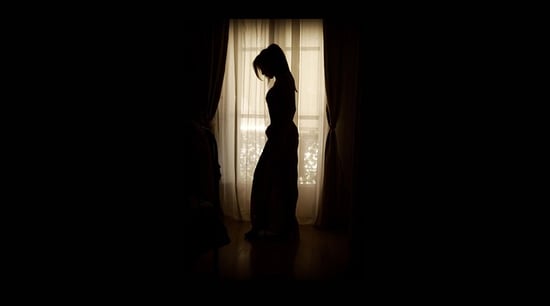
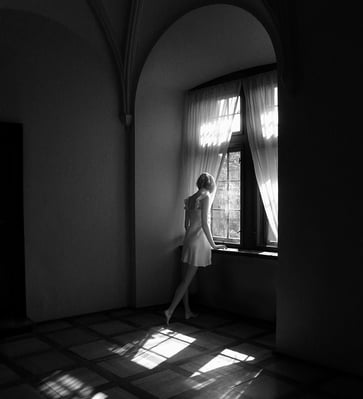
"The Story of an 60 minutes" Summary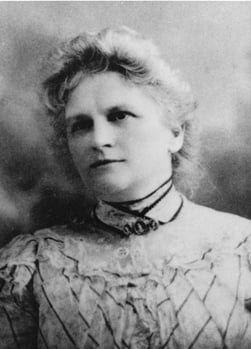
The History of Kate Chopin and the 1890s
A Brusk Biography of Kate Chopin
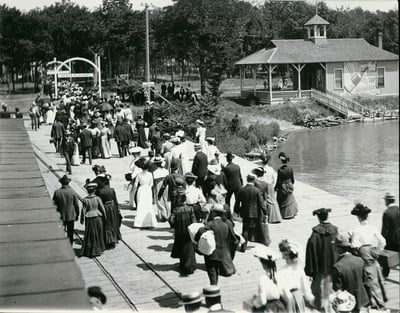
American Life in the 1890s
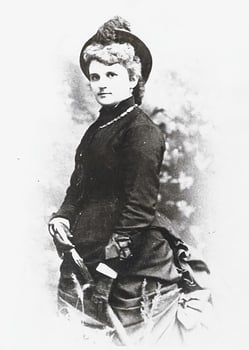
"The Story of an Hour" Analysis
"The Story of an 60 minutes" Themes
Freedom and Repression
Wedlock
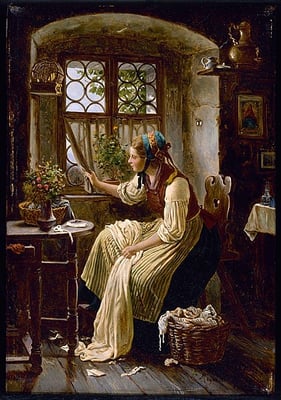
"The Story of an Hr" Characters
Louise Mallard
Josephine
Richards
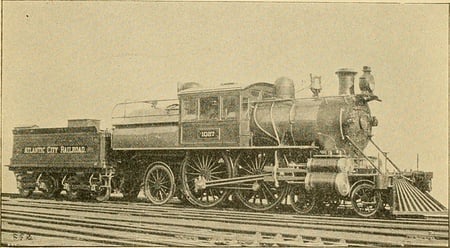
Brently Mallard
The Doctor(due south) 
"The Story of an Hour" Symbolism and Motifs
The Center
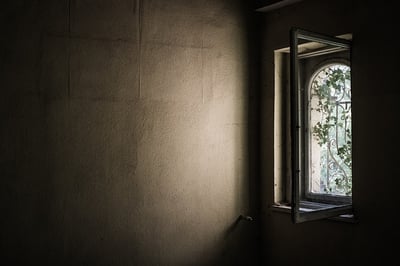
The House and the Outdoors
Joy and Sorrow

Fundamental Takeaways: Kate Chopin's "The Story of an Hour"

What's Adjacent?


About the Author
Ashley Sufflé Robinson has a Ph.D. in 19th Century English Literature. Every bit a content author for PrepScholar, Ashley is passionate about giving college-bound students the in-depth information they demand to go into the school of their dreams.
Plot Story Of An Hour,
Source: https://blog.prepscholar.com/kate-chopin-the-story-of-an-hour-summary
Posted by: emersonwaallovar.blogspot.com


0 Response to "Plot Story Of An Hour"
Post a Comment